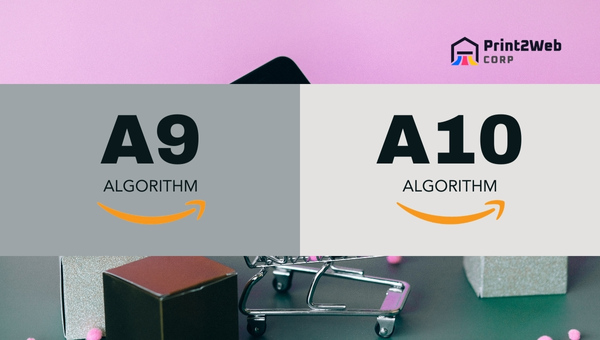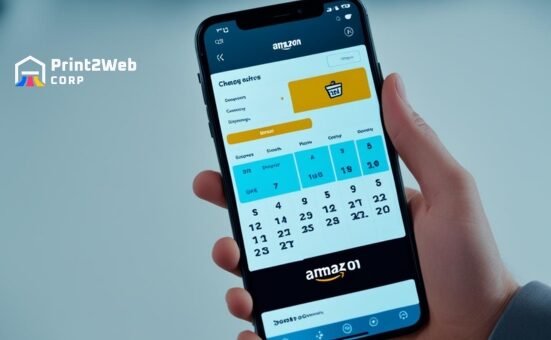Picture this: you’re selling on Amazon, and you want to get your products seen by as many people as possible. Enter the Amazon A10 Algorithm—a true game changer in how products rank and are discovered. Now, if that sounds like some high-tech secret, it’s not! Think of it like a treasure map guiding shoppers to your product amidst a vast sea of competitors. Who wouldn’t want to master that?
So what’s the fuss about the Amazon A10 Algorithm? Well, imagine a giant computer deciding which products people see first when they search for something on Amazon. This algorithm is like the brain behind the scenes making those decisions. To make your product stand out, you need to understand and charm this brain with great listings, positive customer reviews, proper use of keywords, and a few insider strategies.
Here’s What You’ll Learn!
- Crack Down on What Powers Amazon’s Search Engine
- Trade Secrets: Outsmart Your Competitors With Ease!
- Make Your Products Shine With Tips for A10 Mastery
- Simple Tactics: Climb up That Amazon Ranking Ladder
What is an Amazon Search Algorithm?
An Amazon search algorithm is like a recipe that Amazon uses to decide which products to show shoppers when they’re looking for something. Think of it as a set of rules that take what you search for and find the best matches.

To start, let’s talk about what this all means in simple terms. The basics of an Amazon search algorithm are not too hard to get. It’s like having a super smart friend who knows exactly what you want when you tell them just a couple of words. This friend takes those words and looks through tons and tons of products quickly, then shows you the ones they think you’ll like the most.
Understanding How It Works
- Now, let’s break down how this works a bit more.
- When someone types in what they want to buy on Amazon, this search algorithm jumps into action.
- It scans through all kinds of details about every product out there: things like what the product is called, how much it costs, and even if people who bought it seemed happy with their purchase by leaving good reviews.
- All these pieces come together in the algorithm to present shoppers with choices that feel just right for them.
Also Read: Amazon Package Not Delivered? Quick Fix Solutions Here!
Amazon A10 Algorithm
The world of online shopping is a wild one, and getting your products to be noticed on Amazon can feel like a secret mission. That’s where the Amazon A10 algorithm jumps in. It’s like a complex puzzle that decides which products pop up first when buyers are searching for something.

What is Amazon A10?
So, what’s this Amazon A10 thing everyone keeps talking about? I’ll break it down for you: Amazon A10 is the brain behind the scenes that sifts through all the items on sale and picks out what shows up when customers type in their wishes. It’s pretty much their newest wizard, taking over from an older one people called A9.
Decoding How The Amazon A10 Algorithm Works
Are you ready for some decoding action? To understand how this clever machine thinks, picture it juggling a whole bunch of balls at once. Each ball has something important on it — how well does your product sell? Do people like it enough to leave nice words about it? How closely does it match what folks are looking for? This balancing act lets A10 figure out who wins the race to appear first in search results.
Now, these balls aren’t just randomly thrown around. They’re super calculated and change with every new search. So if you want your stuff on top, there’s no magic spell—just hard work and playing by the rules of Amazon’s game!
The Ins and Outs of Amazon Product Ranking
Let me explain to you how products get ranked on Amazon. You see when we’re talking about product ranking, we’re talking about how high up the list your item shows when a shopper searches for something they want to buy.

If your product is right at the top, more people are likely to click on it, and that means you have a better chance of making sales.
The Role of Algorithms in Product Ranking
So, what’s behind this ranking? Algorithms. Think of an algorithm like a recipe that Amazon’s computer uses to decide which products show up first when someone searches for something. The current recipe or algorithm being used by Amazon is known as the A10 algorithm. It takes a bunch of ingredients – like how well your product sells, how many good reviews you have, and lots more – to mix them all and come up with where your product should sit on the search results page.
Factors That Influence How Products Are Ranked
Now, let’s talk about those ingredients I mentioned. These are factors that influence where your product ends up in the search rankings:
- Sales Performance: Just like in sports, the best performers get noticed first. If you’re selling loads of an item, Amazon thinks it must be popular and gives it a boost in rankings.
- Customer Reviews: Positive reviews from buyers tell Amazon that people are happy with your product. Good feedback can help bump up your placement.
- Price: If you’ve got just the right price – not too high or low – then Amazon will see your item as good value for shoppers.
- Prime Eligibility: Products with Prime eligibility (meaning they can be delivered super-fast) often rank higher because they promise convenience.
- Keyword Relevance: This is all about matching what people are searching for with what’s written in your title and description – it needs to be spot on!
All these factors combined determine where exactly on that long list of products yours will appear when someone types something into that search bar on Amazon. Xtra marks if you fit just right into what chores they gave them algorithms!
Factors Impacting The Amazon A10 Algorithm
When I think about what makes a difference in how products show up on Amazon, I focus on the details of the A10 algorithm. It’s like a set of rules that decide which items get to dance in the spotlight and which ones don’t.

A big part of A10 is paying attention to what sellers and buyers do. Here are some things that make an impact:
- Buyer Behavior: How people search, what they click on, and what they end up buying says a lot.
- Seller Authority: If you’re trusted and have been around the block with solid performance, you count for more.
- Product Relevancy: Your items need to match what folks are hunting for – using the right words is key!
- Internal Sales: Things selling well on Amazon already have a leg-up. Think of it as friends recommending friends.
- Quality Over Quantity: It’s not just about selling lots but selling well. Good reviews and happy customers mean more than how many times you’ve convinced someone to buy your stuff.
Also Read: Start a Car Wash Business: Your Easy 10-Step Guide
Amazon A9 Vs. Amazon A10 Algorithm
When trying to figure out how Amazon decides what products show up first in a search, it’s important to look at the changes from the old Amazon A9 algorithm to the newer A10 version. Let’s take a closer look and break things down.

Tracing Back to Origin – Understanding Life before Amazon A10
Before we got to know about A10, there was A9. This was Amazon’s way of sorting things out so that when people searched for a product, they would find what they were looking for quickly. Back then, if you were selling something on Amazon, you’d try to use the right words in your product title and description—the ones people might type into the search box—to get more eyes on your products.
Comparing Key Aspects – Seeing Through Differences
Now let’s look at how different these two algorithms really are:
- Focus on Customer Behavior: The big difference with A10 is that it doesn’t just care about those keywords; it also looks at how customers interact with your product. If people click on your product listing but don’t buy it, that tells Amazon maybe your product isn’t as great as others for that search term.
- More Weight on Sales History: The newer algorithm gives more importance to how well items have sold over time. If you’ve been selling lots of items regularly, those consistent sales tell Amazon your products should probably be higher up in searches because people seem to like them.
- Outside Traffic Matters: Unlike A9, A10 likes it when sellers bring visitors from other sites straight to their Amazon listings—think social media or blogs pointing folks directly there.
- Seller Authority Becomes Key: If you sell a lot of stuff in one particular category and get good reviews, the new system sees you as an authority in that area, and this can push your products up higher versus someone who sells all sorts of random items without focusing on one area.
By understanding these differences between Amazon’s old and new algorithms, sellers can do better by adjusting their methods not just for good words but also by looking at overall stats and where their buyers come from.
Frequently Asked Questions
What is the main goal of Amazon’s search algorithm?
The main goal of Amazon’s search algorithm is to match customers’ searches with the most relevant products to help them find what they need and enhance their shopping experience.
How often does Amazon update its ranking algorithm?
Amazon doesn’t publicly announce how often it updates its ranking algorithm, but changes and refinements are made regularly to improve user experience and relevance.
Does seller performance affect product ranking on Amazon?
Yes, seller performance, including customer feedback, fulfillment efficiency, and order defect rates, can impact product rankings on Amazon.
Can I directly influence my product’s rank on Amazon?
While you can’t directly alter your product’s rank, you can improve factors that the A10 algorithm considers—like keyword optimization, quality images, and positive reviews—and indirectly boost your standing on the platform.
Also Read: Etsy Order Tracking Guide: Simple Steps to Follow
Conclusion
In the world of Amazon, the algorithm that decides what you see when you search for products is key. Everyone trying to sell something keeps an eye on how this works.
The newer A10 algorithm has brought changes, focusing more on making sure shoppers are happy and placing less importance on how much sellers pay in ads. While the A9 algorithm did its job well, A10 aims to keep things fresh by rewarding high-quality items and trusted sellers.







